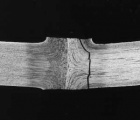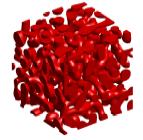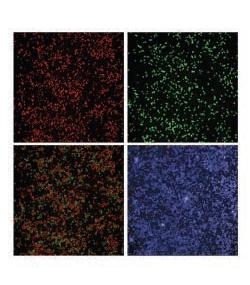Topology is usually defined as the science of the spacial properties that preserved under continuous transformations. So that you can bend, stretch and shrink etc but not tear or glue. This might be the only way to capture the essence in a single sentence but this sentence is meaningless to a person who knows nothing about topology. And the question “Why do we need to study topology?” still remains.
So, we start with examples instead. They come from three seemingly unrelated areas: computer vision, cosmology, and data analysis.
Computer vision
In industrial settings one might need to consider the integrity of objects being manufactured.
The first question may be: this is a bolt holding two things together, does it still or is there a crack in it?

Could be a bone too…
The second question may be: this material is supposed to hold liquid, is it water tight or is there leakage?

In other words: does it hold water?
The third question may be: to be strong this alloy is supposed to be solid, is it or are there air bubbles?

The opposite question is: does it hold air?
Observe that we consider here three different kinds of integrity as there may be a crack but no hole or vice versa etc.
We can describe these situations informally as:
- there are cuts in the object,
- there are tunnels,
- there are voids.
These three types of “damage” correspond to cycles of dimensions 0, 1, and 2 respectively. This is why:
- The simplest object with a “cut” is two points and points are 0-dimensional.
- The simplest object with a “tunnel” is a circle and curves are 1-dimensional.
- The simplest object with a “void” is a sphere and surfaces are 2-dimensional.
Cosmology
What is the shape of the universe? What is the topology? Does it have “cuts”, “tunnels”, or “voids”?
Read the whole article.







